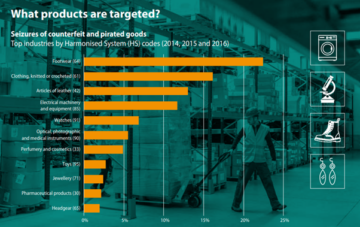
Drayage is one of the supply chain’s most important components, yet it is often confused or simply unknown. When done well, it is easy to overlook this step in the process of moving goods around the world. However, significant disruption occurs in the supply chain when there are mistakes, or it is not handled properly.
What Is Drayage?
Drayage is the stage of the supply chain process during which freight moves from a port to a destination. It is sometimes known as “first mile” because it is typically a short distance move of product from an ocean port to its next stop. So how can this seemingly simple process be problematic or complicated?
Drayage can be seamless when done with the right providers, but without reliable drayage services, problems will trickle down through the supply chain. This impacts every other stage of the process. In other words, drayage must go well to ensure the best possible outcome for the movement of goods on the rest of its journey.
This term is often used in container shipping. Most of the time, the transportation process involves moving goods from the ocean port to another destination within the same metro area. There are several legs to the drayage process, and sometimes they do not include going into the port at all. For example, the legs typically involve the port, yard, warehouse, and rail. Then the container arrives at the final destination. First-mile success sets the tone for every other part of a product’s journey.
Why Does Drayage Matter?
At major ports, such as the Long Beach Port in California, billions of dollars of product arrive and need to move through the ports quickly. During peak seasons, it is critical for these products to move quickly from container ships and into the port to start their journey. Even with all the technology and advances that have been put into this process, problems can still arise.
Some of those concerns include major delays as well as financial penalties. Driver frustration can also occur, often leading to deadline delays. These are some of the biggest problems that can happen in the drayage process, especially if done by an inefficient or ineffective provider. There could be concerns related to a lack of chassis or just not enough carriers available. It is not uncommon for ports to become overwhelmed because demand — including for faster shipping — continues to grow.
So how does drayage matter here? Well-managed services are highly efficient and capable. They are specialized to handle the rapid pace and the intense challenges that are often a part of the process of moving goods over this short first mile. It is a daunting process, but it is also one that must be done effectively.
Without drayage, there would be no way for goods to be transferred between the company’s shipping process points. Let’s say a carrier needs to move a shipment from a ship to a rail car. They need to use drayage services to allow for the process of moving those items from the port to the rail car. Drayage solves that inter-shipping need by providing an effective way to move material between two forms of transportation.
The various classifications of drayage service:
- Inter-carrier: This is the movement of goods between different carriers, such as from a rail station to a trucking terminal.
- Intra-carrier: This type of drayage involves taking freight from two different hubs, but both of those hubs are owned by the same carrier.
- Expedited: This method is specific to time-sensitive products.
- Pier: This is the process of getting cargo and freight to and from terminals and ocean ships docked at a pier.
- Shuttle: This method involves the movement to a temporary location, for example, when the final destination is behind.
Without efficient drayage, the rest of the supply chain is hindered. While it may seem like such a small component of the overall process, it is in fact one of the most critical of those components.
Author bio: Peter Pace is VP of Business Development at AV Logistics and an industry veteran with 35 years of experience in all facets of international shipping and intermodal transportation. He is responsible for identifying new opportunities for growth and expansion within the client bases of AV Logistics and its strategic drayage partner, C&K Trucking LLC.
- SEO Powered Content & PR Distribution. Get Amplified Today.
- Platoblockchain. Web3 Metaverse Intelligence. Knowledge Amplified. Access Here.
- Source: https://www.allthingssupplychain.com/drayage-what-is-it-why-does-it-matter/?utm_source=rss&utm_medium=rss&utm_campaign=drayage-what-is-it-why-does-it-matter
- a
- advances
- All
- and
- Another
- AREA
- around
- Arrives
- AV
- available
- Beach
- because
- become
- behind
- BEST
- between
- Biggest
- billions
- business
- business development
- california
- capable
- car
- carriers
- chain
- challenges
- client
- Company’s
- complicated
- component
- components
- Concerns
- confused
- Container
- continues
- could
- critical
- delays
- Demand
- destination
- Development
- different
- Disruption
- distance
- dollars
- down
- driver
- during
- Effective
- effectively
- efficient
- enough
- ensure
- especially
- Even
- example
- expansion
- experience
- facets
- faster
- final
- financial
- First
- forms
- from
- getting
- Go
- going
- goods
- Grow
- Growth
- handle
- happen
- here
- highly
- How
- However
- HTTPS
- identifying
- Impacts
- important
- in
- In other
- include
- Including
- industry
- inefficient
- International
- involve
- IT
- items
- journey
- known
- Lack
- leading
- legs
- LLC
- location
- logistics
- Long
- major
- material
- Matter
- method
- mistakes
- most
- move
- movement
- moves
- moving
- Need
- needs
- New
- next
- ocean
- ONE
- opportunities
- Other
- overall
- overwhelmed
- owned
- Pace
- part
- partner
- Peak
- plato
- Plato Data Intelligence
- PlatoData
- points
- possible
- problems
- process
- Product
- Products
- properly
- provider
- providers
- providing
- put
- quickly
- Rail
- rapid
- related
- reliable
- responsible
- REST
- same
- seamless
- seasons
- service
- Services
- Sets
- several
- Shipping
- ships
- Short
- significant
- Simple
- simply
- small
- So
- Solves
- some
- specialized
- specific
- Stage
- start
- station
- Step
- Still
- Stop
- Strategic
- success
- such
- supply
- supply chain
- taking
- Technology
- temporary
- Terminal
- The
- the world
- their
- Through
- time
- time-sensitive
- to
- TONE
- transferred
- transportation
- typically
- Uncommon
- use
- various
- veteran
- What
- What is
- which
- while
- will
- within
- without
- words
- world
- would
- years
- zephyrnet











